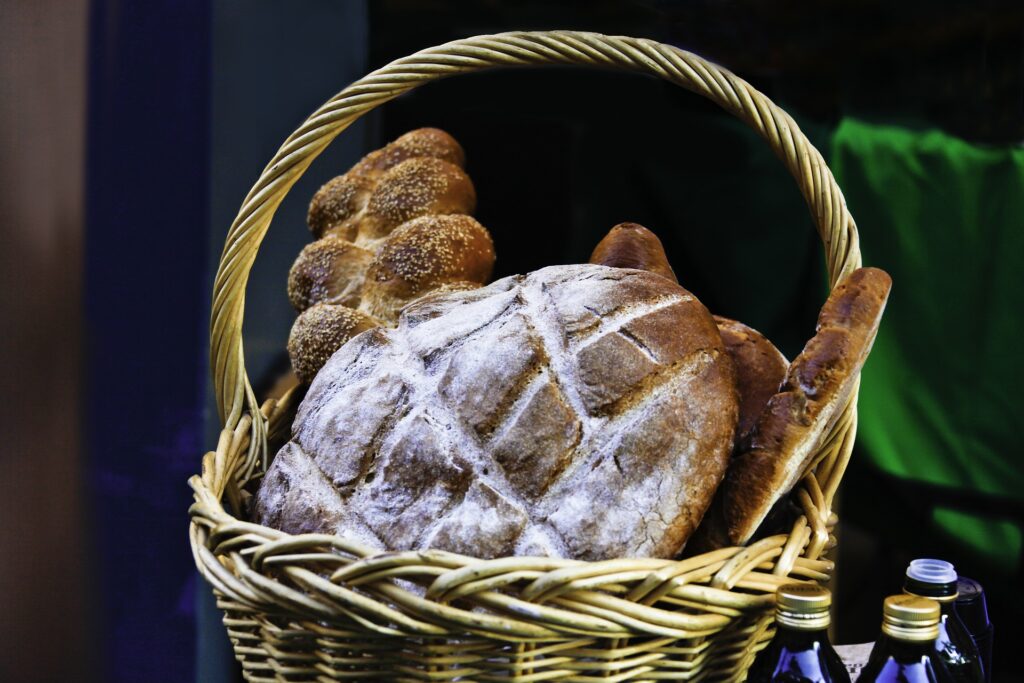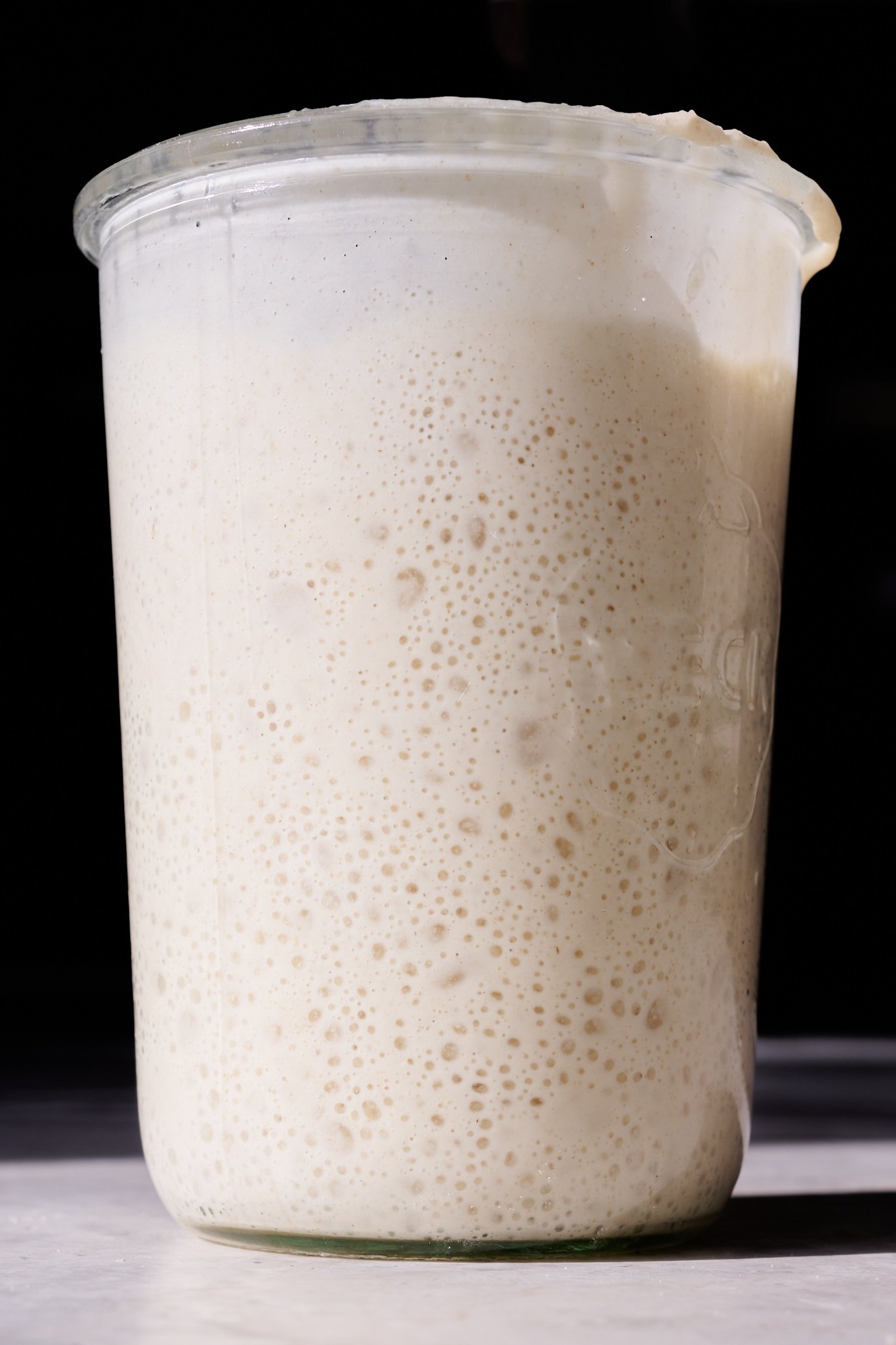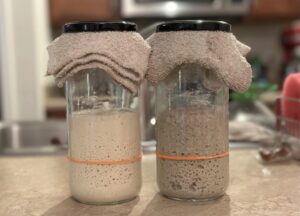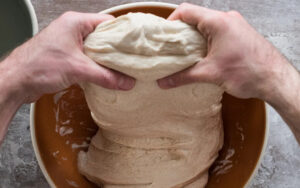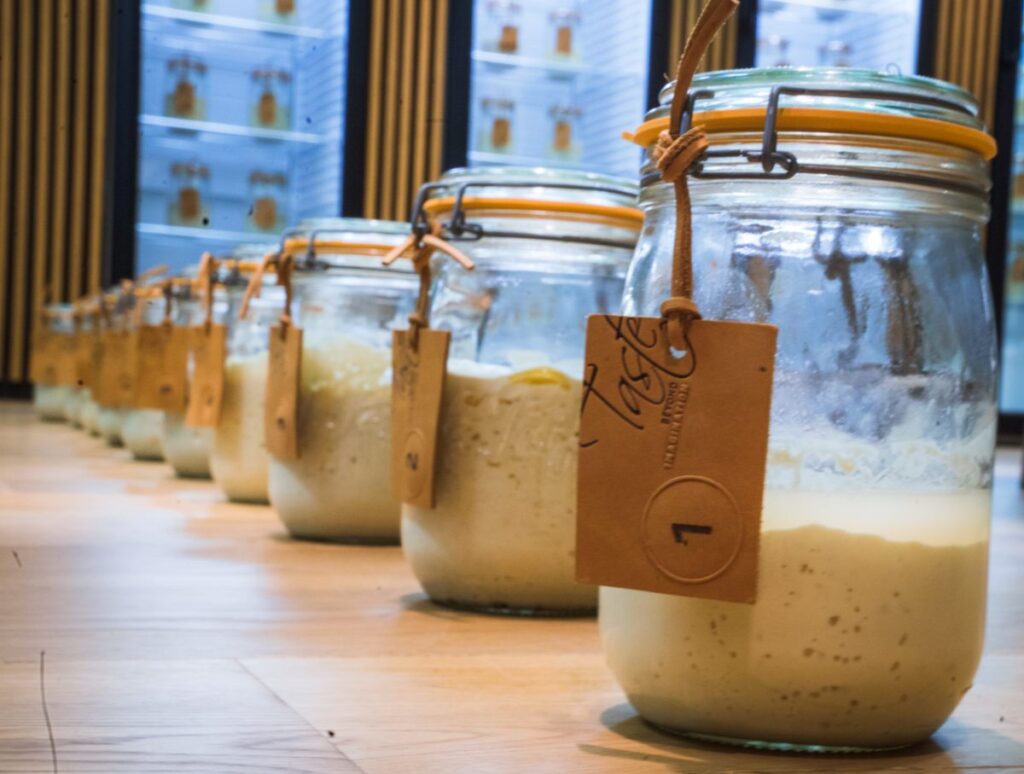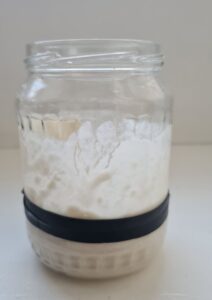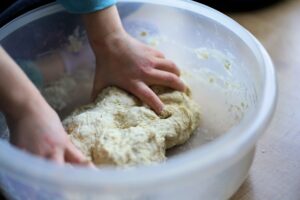1. Use warm water when mixing
My first method for dealing with cold weather is to warm the water I use to refresh my starter, make my levain, or mix my dough.
First, I measure out all the water called for in my recipe and then take its temperature. Then, using a spreadsheet, quick calculation, or water temperature calculator, I’ll determine what I need to heat the water to. Hence, my dough at the end of mixing meets my desired final dough temperature.
If your dough spends significant time in autolyse, take this period into account as the dough will slowly cool to ambient temperature. If it’s cold in your kitchen, keep your dough somewhere warm or heat the mixing water to a few degrees above the called for final dough temperature in the recipe.
2. Use a sourdough starter and a levain when they’re ripe
When temperatures are cool, we might find we’re using our starter before it’s fully ripe. Unfortunately, using a starter early ultimately leads to dough that’s underproofed. To ensure we’re starting on the right foot, keep your starter and levain warm and use it when you spot the signs of ripeness (a loose consistency, sour aroma, bubbles on top and at the sides, and it will have risen to some degree).
The following are steps I take to ensure my starter and levain have vigorous fermentation activity (in order of preference):
- Keep starter in a warm spot. This sounds obvious, but sometimes we fail to realize just how cool some spots in our kitchen are! The top of the refrigerator, near the oven, or a spot below a heating vent are all places that might be warmer in your kitchen. The best spot, of course, would be a dedicated dough proofer.
- Increase starter carryover. My first approach to dealing with cool temperatures is to increase the amount of starter I carry over at each refreshment. In the summer, when maintaining my starter, I might drop carryover down to 5%, but in the winter, I might increase this up to 20% or so, depending on the temperature.
- Use warmer water. Warming your starter mixing water in the microwave or over the stove will help increase its final temperature to keep it warmer for longer.
- Let starter ripen for longer. Because fermentation activity is slowed in the cold, leaving your starter to ferment for longer can help ensure you’re still using it at a ripe state (this assumes temperatures aren’t too cold).
- Increase whole grain percentage. Increasing whole grains (especially rye flour) can help increase fermentation activity.
All of the above steps can help you keep your sourdough starter warmer and with increased activity. Sometimes, just one of the above will help, but for me, it’s usually a combination of them to ensure my starter is strong and healthy in the coldest months of the year.

